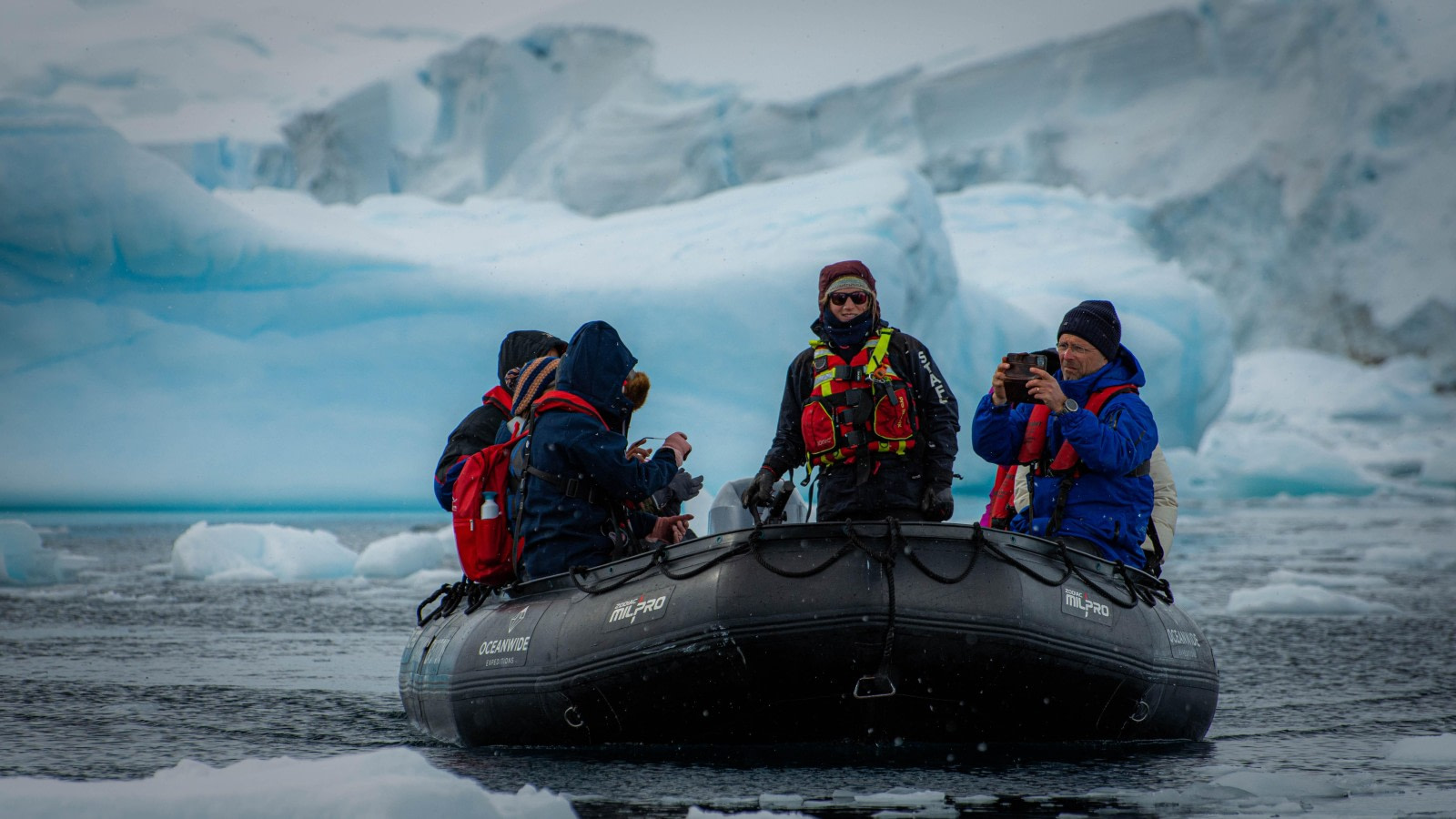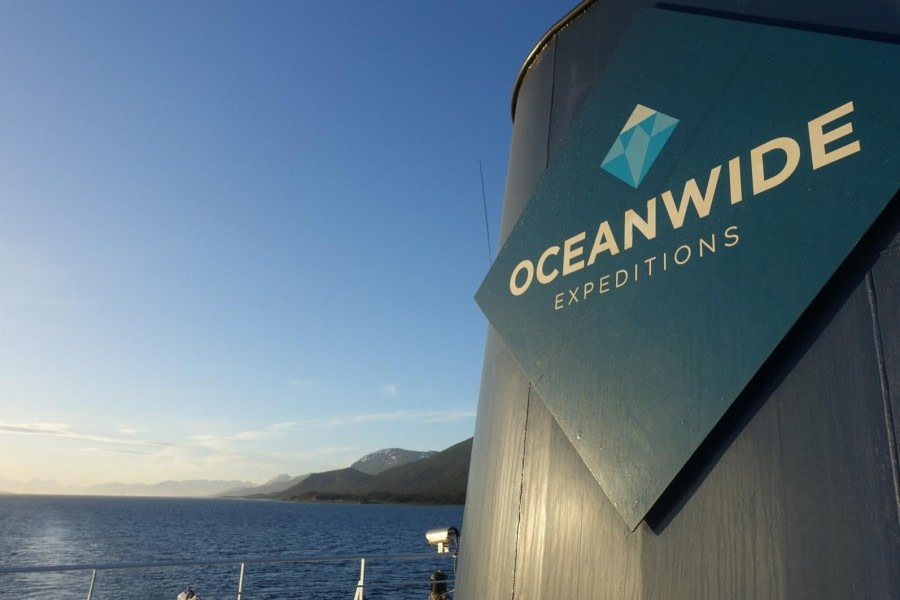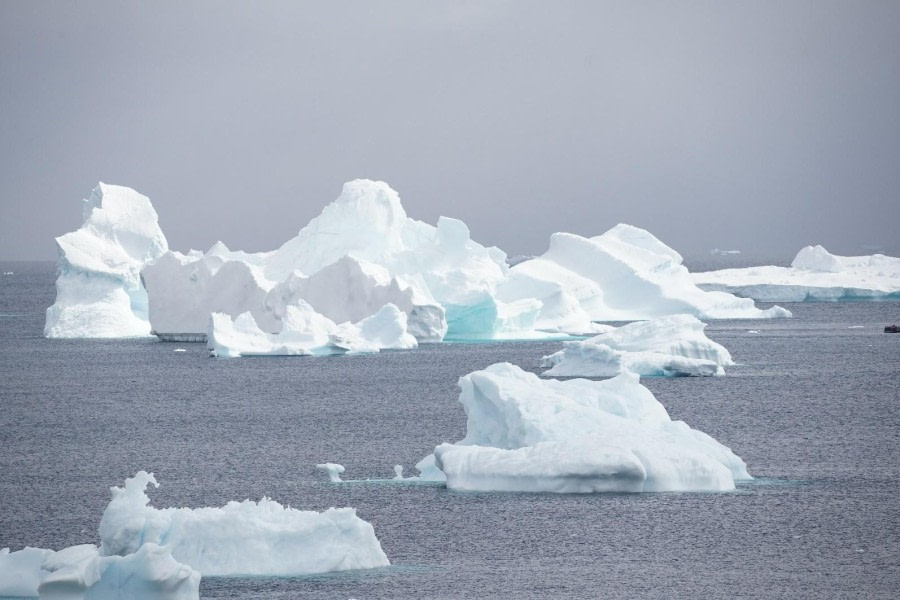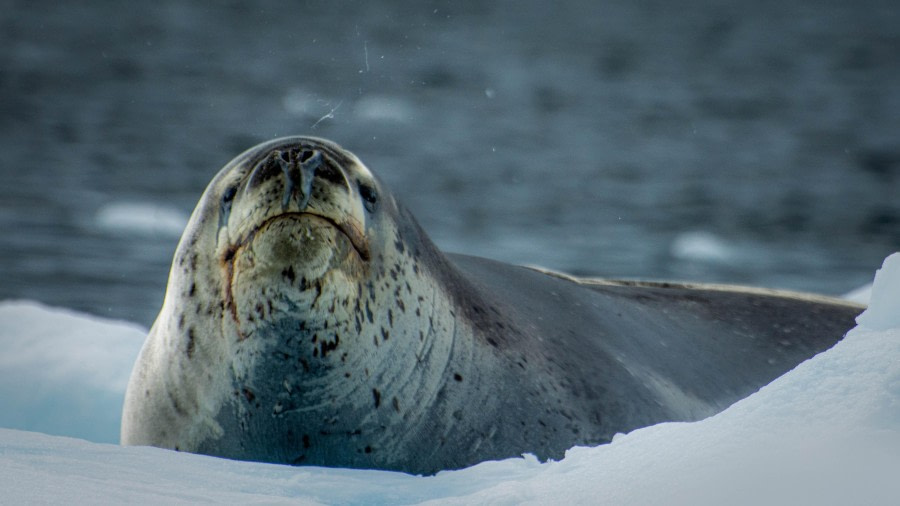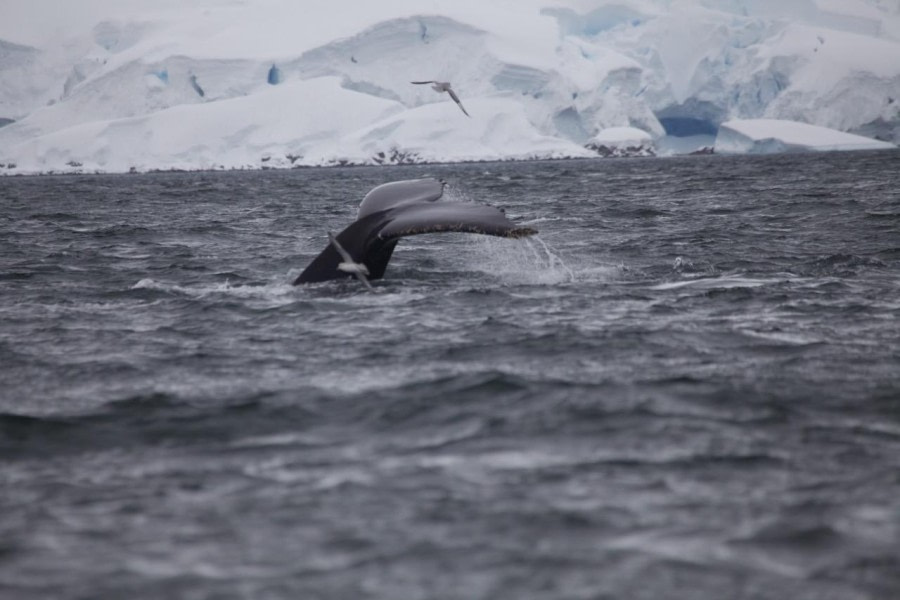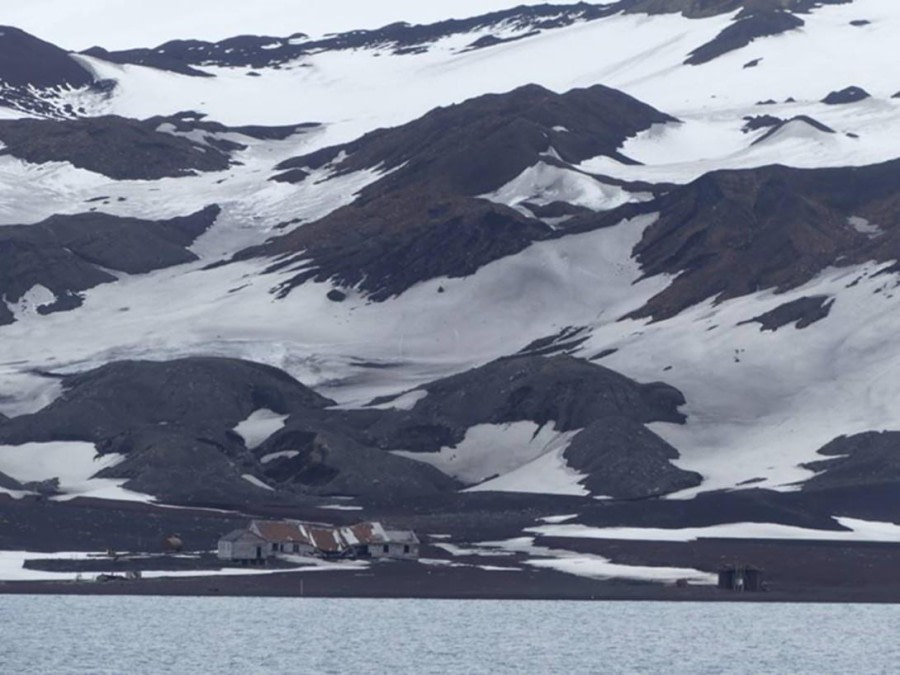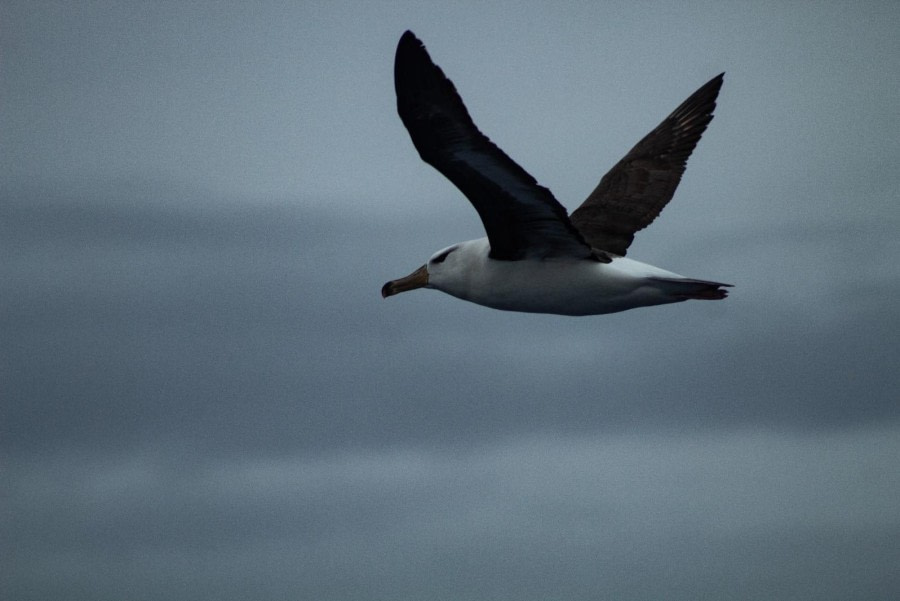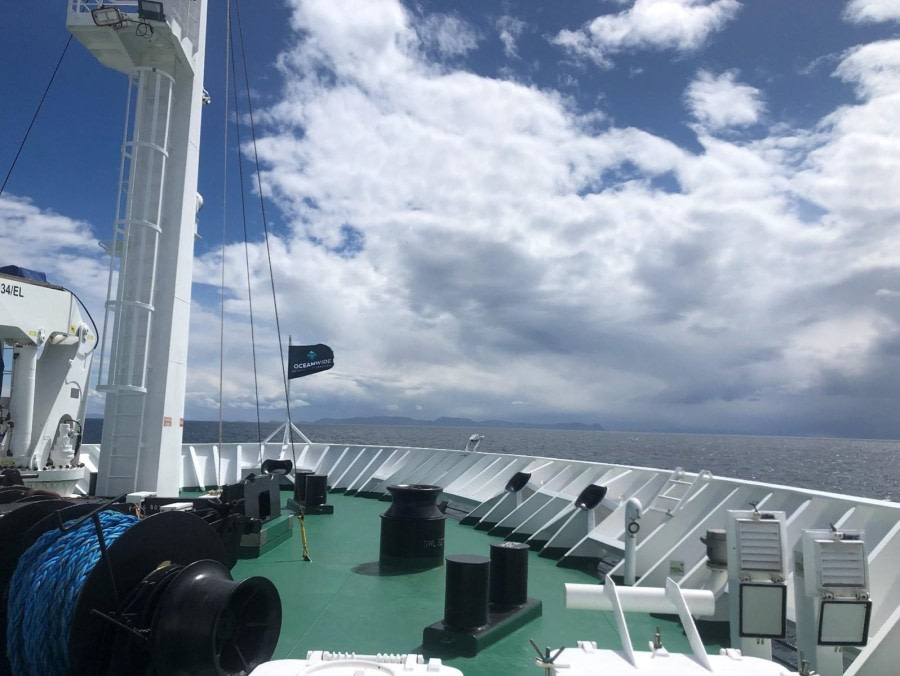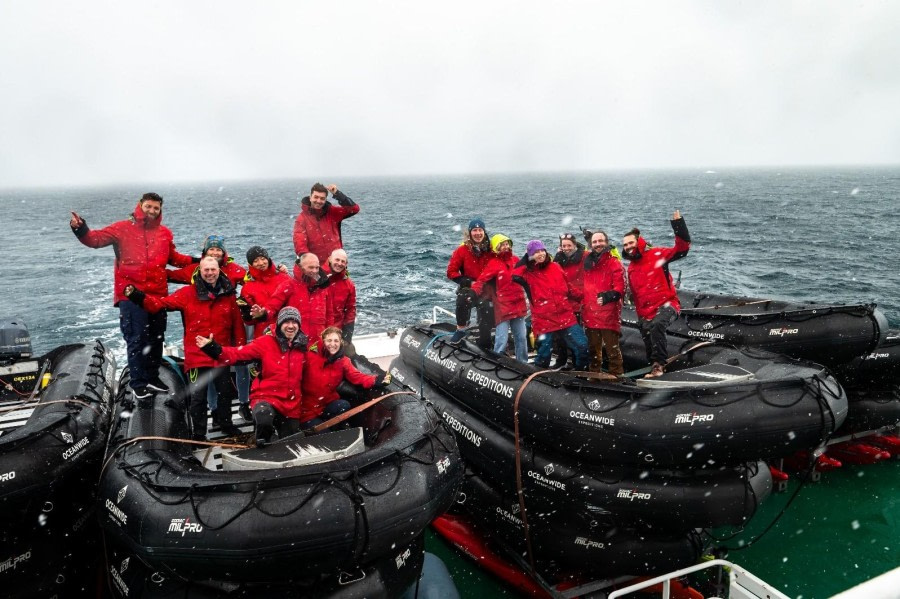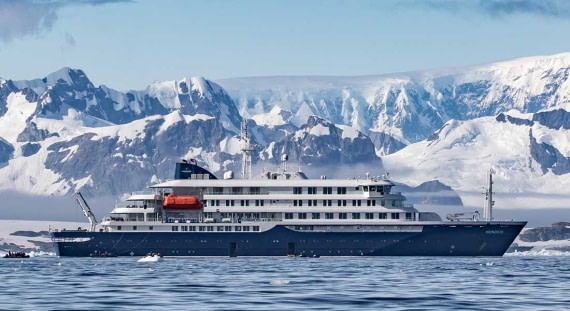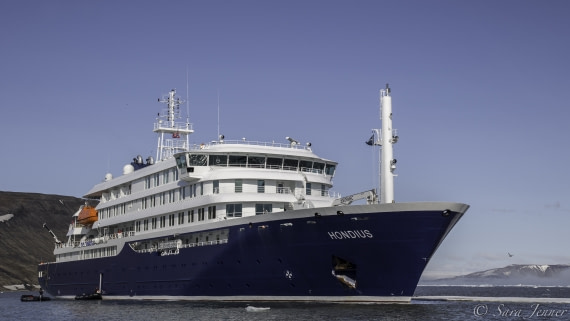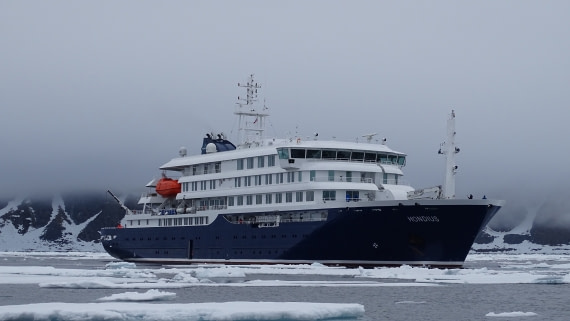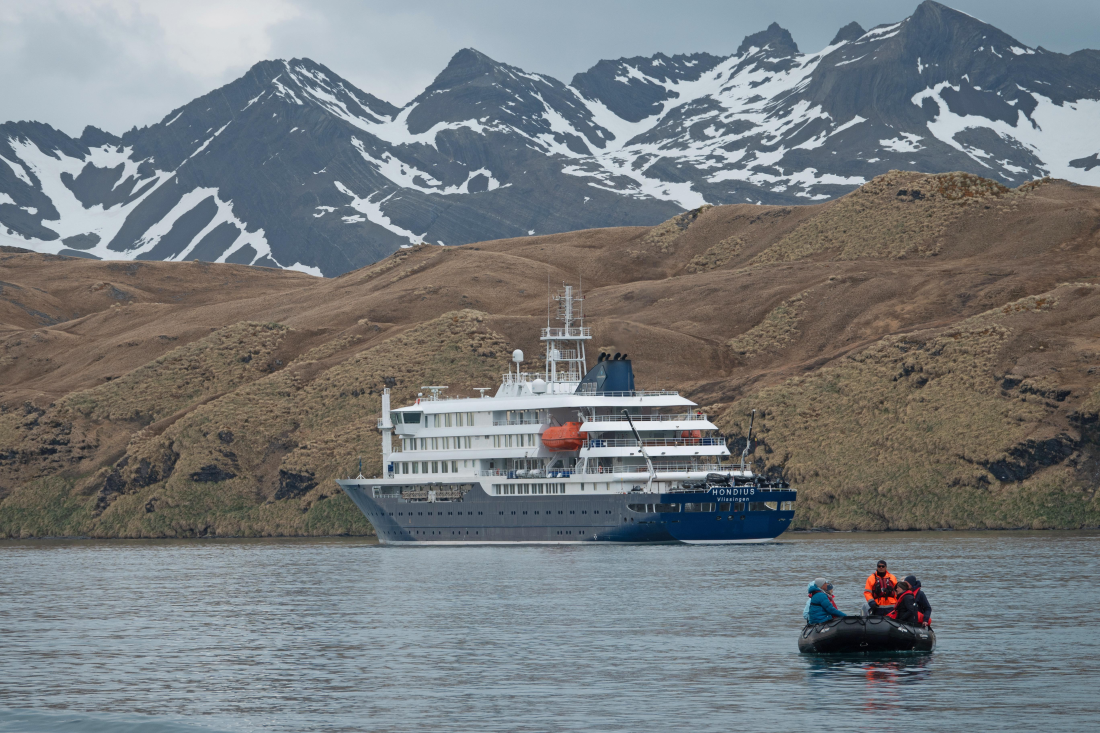| Datum: |
12.12.2023 |
| Positie: |
64°36.6’S / 062°34.1’W |
| Wind: |
NE 6 |
| Weer: |
Snow/fog |
| Luchttemperatuur: |
-1 |
Nothing. If you ask someone what nothing looks like, no one will give you a clear answer, because how can you describe something that doesn't exist? Nevertheless, when the word 'nothing' is uttered, an image takes shape in everyone's mind: something colourless, monochrome, without beginning or end, without directions, without height, without scent, without emotions — something lifeless and oppressive. That's how one could characterize what unfolded before our eyes on the morning of December 12th. The black waters of the Gerlache Strait, gusty wind, and heavy snowfall. Antarctica, like an old quarrelsome woman, decided to show us its nasty character: 'Look, they've come for a visit! And who invited you? Clear off! No need to wander around here!'
The snowfall was so thick that the wipers on the captain's bridge windows could barely cope with their task. The gusty wind made relentless attempts to plaster everything around with snow, depriving us of the ability to see anything. The Hondius, our ship, albeit slowly, but persistently moved forward through this snowy chaos. The staff captain sat silently in his chair, gazing at the instrument readings. Adam, our expedition leader, stood motionless near the window on the starboard side, accompanied by his assistants. The tense silence was intermittently broken by short and quiet remarks about the weather, visibility, wind, and plan adjustments. In the end, it was decided to gather on the bridge a little later, reaching the Orne Harbour, our place of morning activity. Exactly at 6:45, Adam, checking his notes, pressed the loudspeaker button, leaned over the microphone, and spoke in a pleasant baritone: 'Good morning, good morning, good morning… "
While we were having breakfast, the Hondius reached Orne Harbour. Peering out of the window, we could discern a massive, towering cliff with sheer walls. At its base, a picturesque iceberg swayed in the water, propelled by the wind and waves. The wind, by the way, was relatively mild, as the harbour was well-sheltered by the surrounding mountains. However, all the brash ice in the water had been driven ashore right around the landing site. It was evident that no Zodiac could overcome this barrier. A painful and difficult decision loomed – to cancel the operation. After a brief consultation, the ship's senior officials reluctantly arrived at this discouraging conclusion. Orne Harbour remained unconquered, leaving us with nothing but to gaze through the snowy veil at its contours, imagining how the Chinstrap penguins triumphed and gloated, observing us from their nests high on the shore. Well, it's fate, nothing to worry about. Let's move on; perhaps luck will be on our side in the second half of the day.
The heavy, rust-coloured anchor chain creaked and grated as the powerful winches wound it, link by link, onto their spools. Once the anchor was raised, the Hondius subtly shifted, setting course for Danko Island in the middle of the Errera Channel. Meanwhile, we settled into the main lounge, listening to a lecture about shipwrecks resting on the bottom of Antarctic waters. Monika, our guide, narrated with great interest, and we hung on to her words, holding our breath.
As soon as Monika finished her narrative, Adam took the microphone and briefed us on the plans for the remainder of the day. The decision regarding the subsequent schedule was, it must be said, quite original. It was decided to compensate for our morning setback with an evening landing on Cuverville Island, scheduled after dinner. The old cantankerous lady, Antarctica, exchanged her wrath for mercy, and by lunchtime, the weather had somewhat improved. The snow had almost stopped, and the wind had subsided, turning the landing on Danko Island into a tangible reality.
The Zodiacs were lowered into the water, and the expedition team, leaping into the first two boats and loading all the necessary equipment, raced to the shore to mark the trail and conduct reconnaissance. Meanwhile, we started dressing and gathering near the Zodiac boarding area. And there, Albert, our assistant hotel manager, got the green light for the operation, and now we were speeding towards the shore on the Zodiacs.
Reaching the shore of Danko Island, we put on snowshoes and, imitating the waddle of penguins, began to ascend the mountain slope, aiming to climb higher to get close to the Gentoo penguin colony located there. Penguins, diligently covering everything around with their guano, were hard at work constructing nests. They carried small pebbles to and fro in their beaks, arranging them in a strict order to ensure comfort and coziness for themselves and their partners during egg incubation. The stones had to be carried from the very edge of the water. It was a considerable distance. To make their lives a bit easier, the penguins had trampled paths in the snow, known as penguin highways, along which they scurried back and forth, spreading their wings for balance.
Some penguins were already attentively sitting on their eggs, pleased with the wonderful nests they had built. Some careless and cunning ones sneakily stole stones from the nests of those who had already completed construction. And some penguins still just lay on the snow, waiting for it to melt, only then to start building their nests. We watched all of this in fascination, never forgetting to cast our eyes over the landscapes that unfolded before us.
At the appointed time, we returned to the landing site, where our guides, seating us in their Zodiacs, took us on a short Zodiac cruise. Manoeuvring between icebergs, we tried to capture all this beauty in the form of photographs. Some of us were fortunate enough to see a leopard seal sleeping on an ice floe. The creature would occasionally lift its head, cast a disapproving glance at us, and flare its nostrils, trying to understand the strange scent emanating from these unfamiliar beings.
Instead of taking us back to the ship, our guides brought us back to Danco Island. Why, you might ask? Because another event was planned for us on the shore, and its name was the polar plunge – a unique opportunity to overcome fear and plunge into the cold Antarctic waters. Undressing was cold, getting into the water was even colder. One step, another step, yet another... The cold pierced to the bones, the water burned, and breathing became intermittent. But then – splash! – you dive headfirst and emerge a completely different person. No more cold, no fatigue, only joy and adrenaline! Quickly to the shore, where a towel awaits. Then you can catch your breath, calmly get dressed, and only then board the Zodiac and head back to the ship. Dinner is coming soon!
While we were having dinner, the Hondius approached Cuverville Island, home to the largest Gentoo penguin colony on the entire Antarctic Peninsula. On one hand, it was already quite late, but on the other hand, when else would we have the chance to visit here? So, we all gathered near the Zodiac boarding area and headed to the shore. The penguins, as always, were bustling about, purposefully treading their paths, carrying stones to each other for nest construction, and paying no attention to us. We had only an hour for everything, so we briskly followed our paths, concentrating on pressing the shutters of our cameras.
We returned to the ship by ten in the evening. Time for bed!
